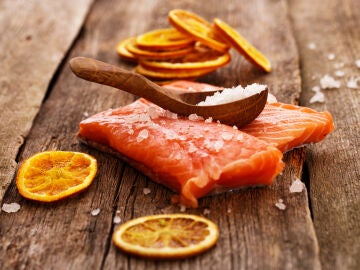
The European Comission will propose to remove the additives that give smoky aromas from the European Union market “as soon as possible” and, if Member States agree, the measure could be in force at the beginning of 2024.
This has been confirmed to the EFE agency Stefan de Keersmaecker, spokesperson for the Community Executive for Public Health and Food Safetyafter receiving the results of a report on these food additives that the European Commission commissioned the European Food Safety Authority (EFSA) and which concludes that they present risks of causing cancer.
“The Commission’s key priority is the health of its citizens: the safety of the food we eat and the products we use,” De Keersmaecker stressed. As part of this work, the Commission requested that EFSA carry out a scientific evaluation and opinions on the safety of smoke flavorings with a view to assessing their genotoxicity.
For the eight smoke aromas evaluated, EFSA concluded that “genotoxicity problems exist or cannot be ruled out“, noted the community spokesperson. For this reason, and based on these opinions, the Commission “immediately” began talks with the Member States on the EU authorizations of the flavors in question, in order to protect the health of citizens. .
“Based on the opinions of the EFSA and taking into account the views of the Member States, the Commission will propose to withdraw these smoke flavors from the EU market as soon as possible. If supported by the Member States, the withdrawal of the smoke aromas from the EU market could take place in early 2024,” the spokesperson concluded.
This was published on its official X account (previously called Twitter), by the Spanish Agency for Food Safety and Nutrition (AESAN), belonging to the Ministry of Consumer Affairs.
Such as explains the AESAN on its official website“smoking is a method traditionally used to help preserve certain foods such as fish, meat and dairy products,” a process that also changes the flavor of foods.
In this way and as an alternative to traditional smoking, “you can add smoke aromas to foods to give them a smoky flavor. They can also be added to foods that are not traditionally smoked (such as soups, sauces or confectionery products). Smoke aromas are produced through a wood combustion process called pyrolysis,” explains AESAN.
Foods where smoke aromas are found
- The smoke aromas They are added to foods, such as meat, fish or cheese, as an alternative to the traditional smoking process. But they can also be used as flavorings in other foods such as soups, sauces, drinks, chips, ice cream and sweets.
In this way and with a view to the renewal of use licenses, the European Commission requested a report on the safety of eight additives from the AFSA, based in the Italian city of Parma, which issued its verdict on November 16.
The eight products that have been used during the last ten years in the EU and that have requested their renewal of use for another decade – another two present on the market have not requested renewal – present risks of genotoxicity (ability of a chemical substance to damage the genetic material of cells).
Changes or mutations in genetic information within a cell can increase the risk of developing diseases such as cancer or hereditary diseases, according to EFSA. For this type of toxicity, the European Food Safety Authority cannot define a safe level of use..
Source: Lasexta
Ricardo is a renowned author and journalist, known for his exceptional writing on top-news stories. He currently works as a writer at the 247 News Agency, where he is known for his ability to deliver breaking news and insightful analysis on the most pressing issues of the day.












